A. Li
MU-MIMO Symbol-Level Precoding for QAM Constellations with Maximum Likelihood Receivers
Oct 29, 2024Abstract:In this paper, we investigate symbol-level precoding (SLP) and efficient decoding techniques for downlink transmission, where we focus on scenarios where the base station (BS) transmits multiple QAM constellation streams to users equipped with multiple receive antennas. We begin by formulating a joint symbol-level transmit precoding and receive combining optimization problem. This coupled problem is addressed by employing the alternating optimization (AO) method, and closed-form solutions are derived by analyzing the obtained two subproblems. Furthermore, to address the dependence of the receive combining matrix on the transmit signals, we switch to maximum likelihood detection (MLD) method for decoding. Notably, we have demonstrated that the smallest singular value of the precoding matrix significantly impacts the performance of MLD method. Specifically, a lower value of the smallest singular value results in degraded detection performance. Additionally, we show that the traditional SLP matrix is rank-one, making it infeasible to directly apply MLD at the receiver end. To circumvent this limitation, we propose a novel symbol-level smallest singular value maximization problem, termed SSVMP, to enable SLP in systems where users employ the MLD decoding approach. Moreover, to reduce the number of variables to be optimized, we further derive a more generic semidefinite programming (SDP)-based optimization problem. Numerical results validate the effectiveness of our proposed schemes and demonstrate that they significantly outperform the traditional block diagonalization (BD)-based method.
MIMIC-IV-Ext-PE: Using a large language model to predict pulmonary embolism phenotype in the MIMIC-IV dataset
Oct 29, 2024Abstract:Pulmonary embolism (PE) is a leading cause of preventable in-hospital mortality. Advances in diagnosis, risk stratification, and prevention can improve outcomes. There are few large publicly available datasets that contain PE labels for research. Using the MIMIC-IV database, we extracted all available radiology reports of computed tomography pulmonary angiography (CTPA) scans and two physicians manually labeled the results as PE positive (acute PE) or PE negative. We then applied a previously finetuned Bio_ClinicalBERT transformer language model, VTE-BERT, to extract labels automatically. We verified VTE-BERT's reliability by measuring its performance against manual adjudication. We also compared the performance of VTE-BERT to diagnosis codes. We found that VTE-BERT has a sensitivity of 92.4% and positive predictive value (PPV) of 87.8% on all 19,942 patients with CTPA radiology reports from the emergency room and/or hospital admission. In contrast, diagnosis codes have a sensitivity of 95.4% and PPV of 83.8% on the subset of 11,990 hospitalized patients with discharge diagnosis codes. We successfully add nearly 20,000 labels to CTPAs in a publicly available dataset and demonstrate the external validity of a semi-supervised language model in accelerating hematologic research.
Generative Models for Simulation of KamLAND-Zen
Dec 22, 2023Abstract:The next generation of searches for neutrinoless double beta decay (0{\nu}\b{eta}\b{eta}) are poised to answer deep questions on the nature of neutrinos and the source of the Universe's matter-antimatter asymmetry. They will be looking for event rates of less than one event per ton of instrumented isotope per year. To claim discovery, accurate and efficient simulations of detector events that mimic 0{\nu}\b{eta}\b{eta} is critical. Traditional Monte Carlo (MC) simulations can be supplemented by machine-learning-based generative models. In this work, we describe the performance of generative models designed for monolithic liquid scintillator detectors like KamLAND to produce highly accurate simulation data without a predefined physics model. We demonstrate its ability to recover low-level features and perform interpolation. In the future, the results of these generative models can be used to improve event classification and background rejection by providing high-quality abundant generated data.
Majorana Demonstrator Data Release for AI/ML Applications
Aug 22, 2023



Abstract:The enclosed data release consists of a subset of the calibration data from the Majorana Demonstrator experiment. Each Majorana event is accompanied by raw Germanium detector waveforms, pulse shape discrimination cuts, and calibrated final energies, all shared in an HDF5 file format along with relevant metadata. This release is specifically designed to support the training and testing of Artificial Intelligence (AI) and Machine Learning (ML) algorithms upon our data. This document is structured as follows. Section I provides an overview of the dataset's content and format; Section II outlines the location of this dataset and the method for accessing it; Section III presents the NPML Machine Learning Challenge associated with this dataset; Section IV contains a disclaimer from the Majorana collaboration regarding the use of this dataset; Appendix A contains technical details of this data release. Please direct questions about the material provided within this release to liaobo77@ucsd.edu (A. Li).
Learning Physics from the Machine: An Interpretable Boosted Decision Tree Analysis for the Majorana Demonstrator
Jul 26, 2022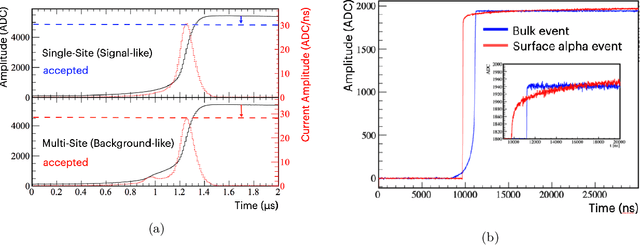
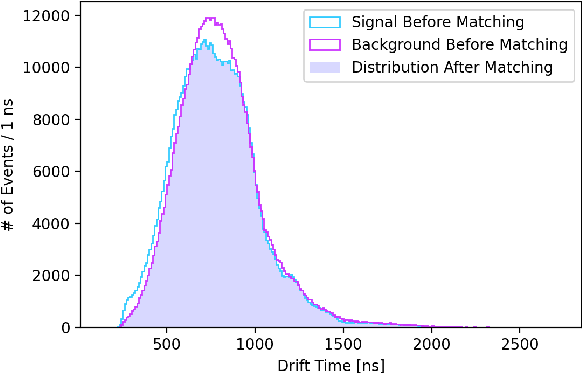
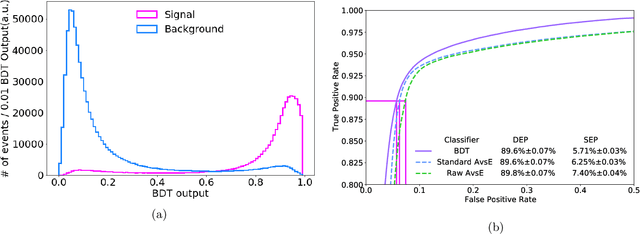
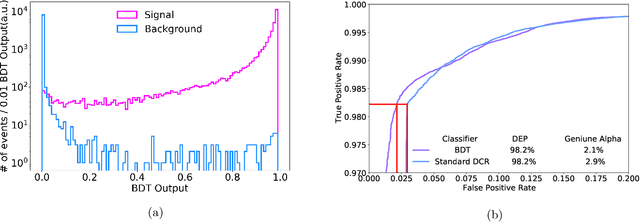
Abstract:The Majorana Demonstrator is a leading experiment searching for neutrinoless double-beta decay with high purity germanium detectors (HPGe). Machine learning provides a new way to maximize the amount of information provided by these detectors, but the data-driven nature makes it less interpretable compared to traditional analysis. An interpretability study reveals the machine's decision-making logic, allowing us to learn from the machine to feedback to the traditional analysis. In this work, we have presented the first machine learning analysis of the data from the Majorana Demonstrator; this is also the first interpretable machine learning analysis of any germanium detector experiment. Two gradient boosted decision tree models are trained to learn from the data, and a game-theory-based model interpretability study is conducted to understand the origin of the classification power. By learning from data, this analysis recognizes the correlations among reconstruction parameters to further enhance the background rejection performance. By learning from the machine, this analysis reveals the importance of new background categories to reciprocally benefit the standard Majorana analysis. This model is highly compatible with next-generation germanium detector experiments like LEGEND since it can be simultaneously trained on a large number of detectors.
KamNet: An Integrated Spatiotemporal Deep Neural Network for Rare Event Search in KamLAND-Zen
Mar 08, 2022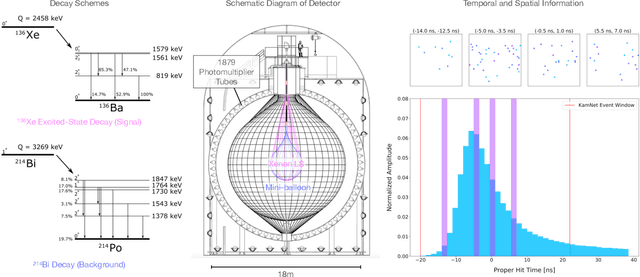
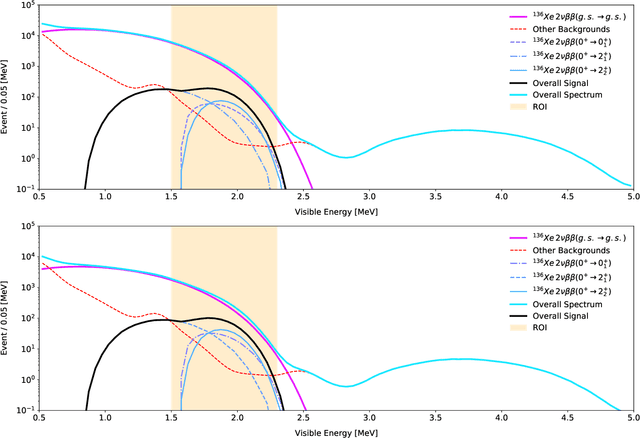
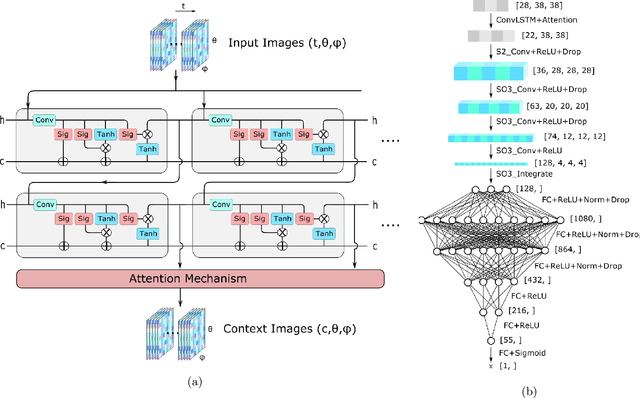
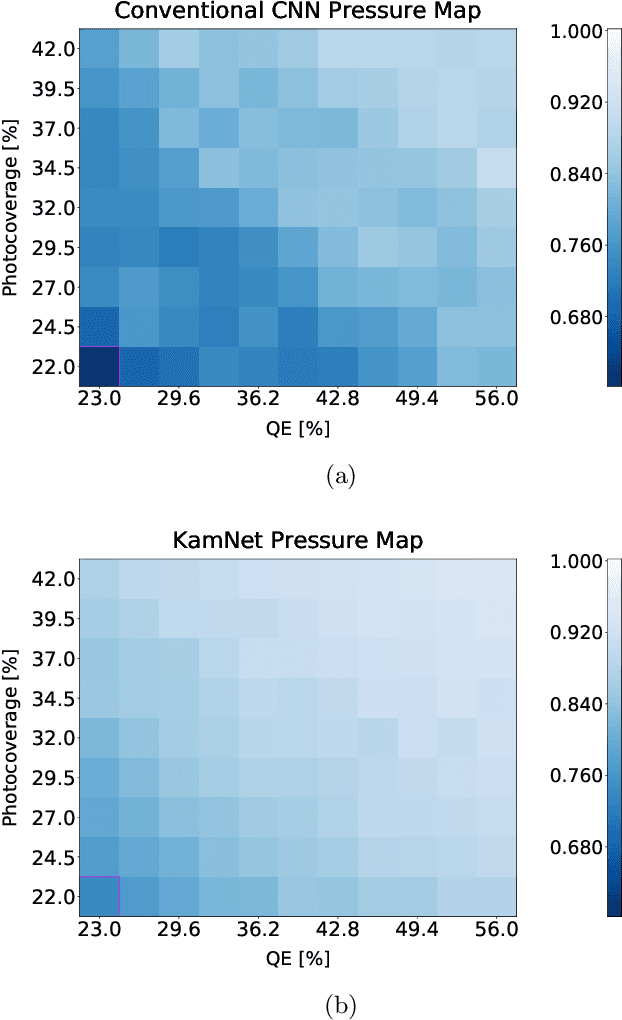
Abstract:Rare event searches allow us to search for new physics at energy scales inaccessible with other means by leveraging specialized large-mass detectors. Machine learning provides a new tool to maximize the information provided by these detectors. The information is sparse, which forces these algorithms to start from the lowest level data and exploit all symmetries in the detector to produce results. In this work we present KamNet which harnesses breakthroughs in geometric deep learning and spatiotemporal data analysis to maximize the physics reach of KamLAND-Zen, a kiloton scale spherical liquid scintillator detector searching for neutrinoless double beta decay ($0\nu\beta\beta$). Using a simplified background model for KamLAND we show that KamNet outperforms a conventional CNN on benchmarking MC simulations with an increasing level of robustness. Using simulated data, we then demonstrate KamNet's ability to increase KamLAND-Zen's sensitivity to $0\nu\beta\beta$ and $0\nu\beta\beta$ to excited states. A key component of this work is the addition of an attention mechanism to elucidate the underlying physics KamNet is using for the background rejection.
 Add to Chrome
Add to Chrome Add to Firefox
Add to Firefox Add to Edge
Add to Edge